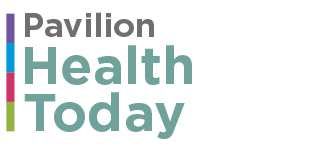Pavilion Publishing and Media Ltd
Blue Sky Offices Shoreham, 25 Cecil Pashley Way, Shoreham-by-Sea, West Sussex, BN43 5FF, UNITED KINGDOM
Five devices used to diagnose and assess the severity of obstructive sleep apnoea hypopnoea syndrome (OSAHS) have been recommended by NICE in new draft guidance.
The devices can all be used at home while sleeping and do not require cannulas or formal instructions in hospital to use, so are therefore considered less invasive and easier to use than standard diagnostic methods.
2.5 million people have sleep apnoea in UK
Around 2.5 million people in the UK (roughly 5% of the population) are estimated to have obstructive sleep apnoea hypopnoea syndrome.
While the condition is closely associated with obesity, one-quarter to one-third of people with obstructive sleep apnoea/hypopnoea syndrome are not obese. Other high-risk groups include those with cardiac disease, refractory hypertension, arrhythmias, cerebrovascular disease and type 2 diabetes.
Continuous positive airway pressure (CPAP) is considered to be the most effective treatment for patients with obstructive sleep apnoea hypopnoea syndrome. If used nightly, this treatment is very effective at reversing the symptoms of OSAHS.
Devices more comfortable and less invasive
Currently, the initial test for OSAHS is home respiratory polygraphy (RP). This involves sleeping with a band around the chest and abdomen to measure movement, a small flow sensor in the nostrils and a blood oxygen monitor (oximetry) on the finger.
The five new devices recommended in the guidance are considered more comfortable to wear and less invasive than the home RP diagnostic test. The devices include:
- Two which are strapped to the wrist, with sensors attached to the finger and chest which measure inputs including heart rate, body movement and position, snoring and chest motion.
- One which has a wireless sensor attached to the throat to record sound generated from physiological body processes including respiratory and cardiac functions.
- One which has a belt worn around the waist with a wired sensor on both the chin and forehead to measure jaw movements.
- One with a wireless sensor attached to the finger to detect symptoms using oxygen saturation, body movement and pulse rate.
NICE notes that some devices require internet and smartphone compatibility, with three of the five devices reusable.
Devices could improve detection of sleep apnoea for people with black or brown skin
The NICE Committee notes the particular benefit of these devices for people with black or brown skin. This is because oximetry is the secondary choice if home RP is unavailable, however this measure is not considered as sensitive a test for OSAHS diagnosis and may overestimate levels of oxygen in the blood for people with black or brown skin.
However, the committee notes further research is needed on whether the home testing devices will improve detection among this group.
Mark Chapman, director of the Health Technologies Programme at NICE, said: “Having obstructive sleep apnoea can cause serious health issues which could be managed if diagnosed and treated. Many people don’t even know they have this condition which is why it is important to be able to receive a diagnosis quickly and efficiently.
“It is promising that some of the new devices could have the potential to further improve detection of sleep apnoea for people with black or brown skin, but further evidence is needed to show this.
“Another added benefit to these new devices includes the fact they are less invasive, more comfortable to wear, and could cut waiting times because they are easier to use, thus speeding up diagnosis and freeing up clinician time.”


